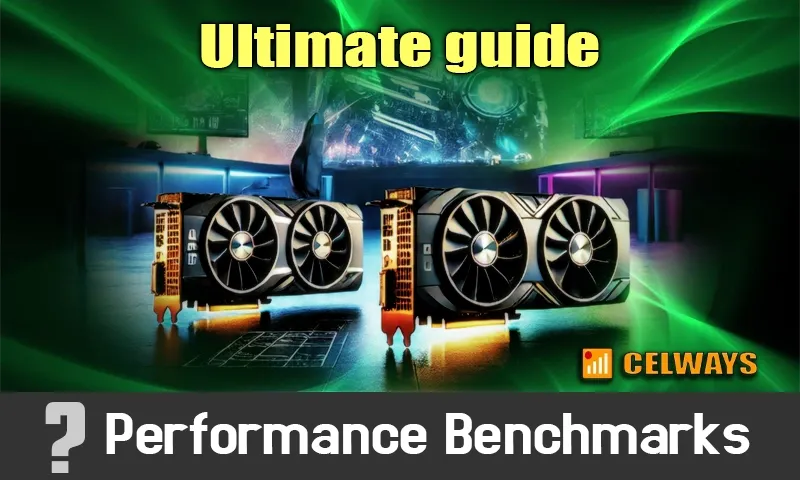Design plan has advanced drastically over the a long time, requiring progressively capable equipment to meet the requests of imaginative experts. The GPU (Illustrations Preparing Unit) plays a urgent part in design plan, affecting the execution of computer program like Adobe Photoshop, Artist, Blender, and 3D rendering applications. In this article, we’ll jump profound into the most recent GPU details and recognize the best alternatives for design design.
Table of Contents.
- Importance of GPUs in Illustrations Design
- Key Highlights to See for in a GPU
- Latest GPU Models Reviewed
- Performance Benchmarks
- Best GPUs for Particular Utilize Cases
- FAQs approximately GPUs for Design Design
Importance of GPUs in Illustrations Design.
A GPU is vital for design plan as it handles complex computations, such as rendering pictures, handling impacts, and empowering smooth real-time sneak peaks. Here are the key reasons why a GPU is essential:
- Faster Rendering Times: Advanced GPUs can handle 3D models, activitys, and high-resolution pictures much quicker than CPUs.
- Improved Workflow: Errands like applying channels, scaling, and color reviewing ended up seamless.
- Support for Specialized Program: Numerous plan programs utilize GPU speeding up to make strides performance.
- Handling High-Resolution Shows: GPUs oversee 4K and 8K screens, guaranteeing clarity and smooth performance.
Key Highlights to See for in a GPU.
When selecting a GPU for illustrations plan, prioritize the taking after features:
1. VRAM (Video RAM)
- VRAM is basic for dealing with huge surfaces, high-resolution pictures, and complex models.
- Recommendation: See for at slightest 8GB of VRAM for proficient work. For progressed 3D rendering or 4K video altering, 16GB or more is ideal.
2. CUDA Centers and Stream Processors.
- These are the centers capable for handling illustrations data.
- NVIDIA GPUs have CUDA centers, whereas AMD GPUs utilize Stream Processors.
- Recommendation: Higher center checks regularly show way better performance.
3. Clock Speed.
- Determines how quick the GPU forms data.
- Measured in MHz or GHz, a higher clock speed can make strides rendering times.
4. Beam Following Support.
- Enables reasonable lighting and reflections, pivotal for 3D rendering.
- NVIDIA’s RTX arrangement and AMD’s RX 6000 arrangement bolster beam tracing.
5. Computer program Ecosystem.
- Check for compatibility with plan program. NVIDIA’s Studio Drivers and AMD’s ProRender offer improved execution for inventive applications.
Latest GPU Models Reviewed.
Let’s investigate a few of the most recent GPUs accessible for illustrations design:
1. NVIDIA GeForce RTX 4090.
- VRAM: 24GB GDDR6X
- CUDA Centers: 16,384
- Base/Boost Clock: 2.23 GHz / 2.52 GHz
Highlights: Remarkable execution for 3D rendering and real-time beam following. Perfect for experts dealing with complex projects.
2. AMD Radeon RX 7900 XTX.
- VRAM: 24GB GDDR6
- Stream Processors: 6,144
- Base/Boost Clock: 2.3 GHz / 2.5 GHz
Highlights: Incredible execution for high-resolution workflows and competitive pricing.
3. NVIDIA GeForce RTX 4070.
- VRAM: 12GB GDDR6X
- CUDA Centers: 5,888
- Base/Boost Clock: 1.92 GHz / 2.48 GHz
Highlights: A cost-effective choice for mid-level professionals.
4. AMD Radeon RX 7600.
- VRAM: 8GB GDDR6
- Stream Processors: 2,048
- Base/Boost Clock: 2.25 GHz / 2.66 GHz
Highlights: Reasonable and productive for entry-level plan tasks.
5. NVIDIA Quadro RTX A6000.
- VRAM: 48GB GDDR6
- CUDA Centers: 10,752
- Base/Boost Clock: 1.41 GHz / 1.8 GHz
Highlights: Particularly outlined for proficient makers, advertising unmatched VRAM and stability.
Performance Benchmarks.
Performance benchmarks offer assistance assess real-world capabilities of GPUs in illustrations plan. Here are comparative comes about based on key applications:
1. Adobe Photoshop.
- Best Entertainer: NVIDIA RTX 4090 for ultra-fast channel application and picture processing.
- Runner-Up: AMD RX 7900 XTX with proficient layer manipulation.
2. Blender (Cycles Rendering)
- Best Entertainer: NVIDIA RTX 4090 for exceptional rendering speeds.
- Runner-Up: NVIDIA RTX 4070 for budget-friendly rendering.
3. Autodesk Maya.
- Best Entertainer: NVIDIA Quadro RTX A6000 for faultless execution in high-poly modeling
- Runner-Up: AMD RX 7900 XTX for fabulous viewport performance.
Best GPUs for Particular Utilize Cases.
1. 3D Rendering and Animation.
- Top Choice: NVIDIA RTX 4090 for its beam following capabilities and tall VRAM.
- Alternative: AMD RX 7900 XTX for a adjusted price-to-performance ratio.
2. Video Editing.
- Top Choice: NVIDIA RTX 4070 for real-time playback and quick rendering.
- Alternative: AMD RX 7600 for budget-conscious editors.
3. 2D Plan and Illustration.
- Top Choice: NVIDIA RTX 3060 for cost-effective performance.
- Alternative: AMD RX 6600 XT for smooth operation in Photoshop and Illustrator.
4. Amusement Design.
- Top Choice: NVIDIA RTX 4090 for consistent integration with Unbelievable Engine.
- Alternative: AMD RX 7900 XTX for dealing with complex scenes.
FAQs approximately GPUs for Illustrations Design
1. Is a high-end GPU essential for design design?
It depends on your workload. For 2D plans, a mid-range GPU suffices. For 3D modeling and rendering, high-end GPUs are indispensable.
2. What is the contrast between gaming GPUs and proficient GPUs?
Professional GPUs, like NVIDIA Quadro, offer way better soundness, exactness, and driver bolster for inventive applications.
3. How much VRAM is sufficient for 4K video editing?
At slightest 8GB of VRAM is prescribed, but 16GB or more guarantees smoother performance.
Conclusion.
Choosing the best GPU for design plan depends on your particular necessities and budget. For experts taking care of seriously 3D ventures, the NVIDIA RTX 4090 or Quadro RTX A6000 are unparalleled. For budget-conscious makers, the AMD RX 7600 or NVIDIA RTX 4070 offer fabulous performance.
Stay ahead of the bend by contributing in a GPU that adjusts with your imaginative objectives and program prerequisites. Keep in mind, a capable GPU is not fair an cost but an speculation in your efficiency and imaginative potential.









0 Comments